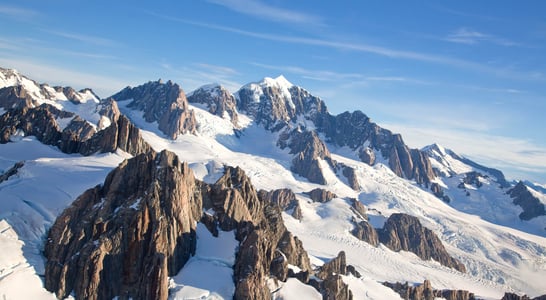
Rajneesh's birthday
Spiritual leader, public speaker and founder of the Rajneesh movement, Chandra Mohan Jain —or as he came to be widely known, Rajneesh or Osho—, was born on December 11th, 1931, in the Raisen District of Madhya Pradesh, India. Rebellious and outspoken from a young age, Rajneesh’s interests during his youth involved politics, religion, meditation and yoga.
Because of his very argumentative and constant challenge to people’s views on politics, morality and religion, Rajneesh was asked to leave the university he was attending in 1951. He faced the same issue when he taught at Raipur Sanskrit College in 1957, after having achieved a BA and later an MA in philosophy at D. N. Jain College and the University of Sagar respectively.
In 1958, Rajneesh was employed as a lecturer at the Jabalpur University, and two years later was promoted to professor. During this time, he also traveled around India, using the name Acharya Rajneesh, and made provocative discourses in which he spoke against socialism, Gandhi, and institutional religions.
His views started to gain him supporters, and people soon went to Rajneesh with the intention of developing their spiritual aspects and transforming their daily lives, to which Rajneesh agreed in exchange for donations. It wasn’t long before Rajneesh was leading meditation camps. By 1962, meditation centers also began to pop up in concurrence with his teachings. After a series of lectures in 1968, in which he called for free acceptance of sex, Rajneesh began to be known as the “sex guru.”
At a public meditation event in early 1970, Rajneesh introduced his Dynamic Meditation method, which consisted of breathing very fast and celebrating with music and dance. That same year, he relocated to Mumbai and for the first time initiated a group of followers, which were called the Neo-Sannyasins. In 1971, he adopted the title “Bhagwan Shree Rajneesh.”
Since living in Mumbai proved bad for his health, Rajneesh moved to Koregaon Park, Pune, in the state of Maharashtra. His new place there eventually became the center of an ashram (nowadays known as OSHO International Meditation Resort), a sort of monastery in Indian religions. Rajneesh spoke at the Pune ashram from 1974 to 1981 and, thanks to different forms of mass media, was able to reach a bigger audience. His discourses were available worldwide, which prompted the increase in the number of Western visitors.
By 1981, the ashram was hosting 30,000 guests per year. Following fifteen years of daily lectures, Rajneesh put himself through a period of self-imposed public silence that lasted almost four years.
After tensions escalated around the Pune ashram and the government, which included criticism and threats, the ashram started to consider establishing a new commune in the United States. In 1981, a 260km² ranch in Wasco County, Oregon was purchased for that purpose, which was quickly renamed “Rancho Rajneesh.” The spiritual leader moved there soon after.
In May 1982 the residents of Rancho Rajneesh voted to incorporate it as the city of Rajneeshpuram. Amidst legal battles with the ranch’s neighbors and state government due to disputes over the use of the land, Rajneesh remained mainly secluded and away from public life, mainly communicating with only a few key disciples. No longer lecturing, he interacted with his followers from a distance.
In 1985, Rajneesh was deported from the United States due to immigration issues, and another twenty-one countries also denied him entry. A year later, Rajneesh went back to Mumbai, where he stayed with one of his disciples. At this time, he also decided to resume his lectures, and returned to Pune in 1987 to continue his ashram. In 1989, Rajneesh took on the name “Osho Rajneesh,” and later shortened it to “Osho.” Having been experiencing failing health in the last few years of his life, Rajneesh died on January 19th, 1990, in Pune, India. Often considered as one of the most controversial spiritual leaders of his time, Rajneesh nonetheless continues to be popular after his death and his teachings have inspired many of the New Age Western movements.
Also on this date...
National Have a Bagel Day
A delightful morning treat — round and satisfying, toasted to perfection and topped with a variety of delicious spreads.
International Mountain Day
Take a scenic hike or drive up a nearby peak, try adventurous sports like mountain biking and skiing or camp out and sleep under the stars.




